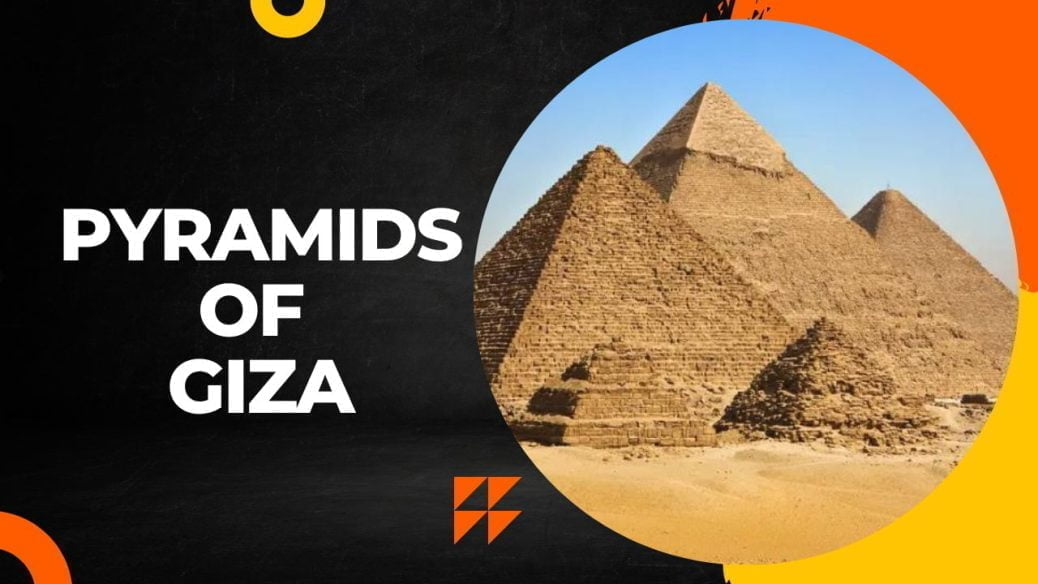Long before the towering technological marvels of the modern world, the Pyramids of Giza stood majestically as one of humanity’s greatest feats. Explore this majestic sight with us as we take you on an adventure through time and take a look into history at one of the world’s most iconic structures.
Introduction to Pyramids of Giza
Since the time of their construction, the Pyramids of Giza have been shrouded in mystery. These massive structures, built in the desert near Cairo, have baffled archaeologists and historians for centuries. How did the ancient Egyptians build such massive structures without modern technology? How were they able to align the pyramids perfectly with the cardinal points? And what was their purpose?
While there are still many unanswered questions about the pyramids, we do know a great deal about these incredible structures. In this blog post, we’ll take a journey through time to explore the history and mystery of the Pyramids of Giza.
Historical Significance of the Pyramids
The ancient Pyramids of Giza are some of the most iconic and recognizable structures in the world. These massive monuments were built over 4,500 years ago and served as tombs of pharaohs and their consorts. The Pyramids of Giza are the only remaining Wonder of the Ancient World, and their historical significance is immense.
For centuries, the Pyramids have captivated the imaginations of people from all corners of the globe. Their massive size and intricate design continue to defy explanation, and they remain one of the greatest mysteries of our time. The Pyramids are a source of endless fascination, and they hold an important place in human history.
The architecture of the Great Pyramid
The architecture of the Great Pyramid is a sight to behold. Built over 4,500 years ago, the Great Pyramid was the tallest man-made structure in the world for almost 4,000 years. Its sheer size and scale are awe-inspiring, and it is one of the most studied and debated ancient structures in history.
There are several theories about how the Great Pyramid was built, but the most popular theory is that it was built using an approach called “the Ramp Theory”. This theory suggests that workers dragged limestone blocks up a sloping ramp to the construction site. The ramp would have been built as the pyramid grew taller, and workers would have used pulleys and levers to move the blocks into place.
Some researchers believe that there is evidence that suggests that aliens were involved in the construction of the Great Pyramid. These theorists believe that the pyramid’s perfect alignment with the true north, its strange chambers and passageways, and its strange acoustics are evidence of extraterrestrial involvement.
Whether you believe that aliens were involved in its construction or not, there is no denying that the Great Pyramid is an incredible feat of human engineering and architectural achievement.
Ancient Art and Hieroglyphs Found in the Pyramids Of Giza
The ancient pyramids of Giza are a complex and fascinating site that has been attracting tourists for centuries. These towering structures were built over 4,500 years ago and served as tombs for the Pharaohs and their consorts. The most famous of the pyramids is the Great Pyramid of Khufu, which is the largest of the three main pyramids at the Giza complex.
Within the pyramid complex, there are many small pyramids and temples that were used for various purposes such as storage or housing the Pharaoh’s ka, or spirit. Hieroglyphs are everywhere at the Giza complex, providing insight into the lives of Ancient Egyptians.
One of the most interesting things about hieroglyphs is that they can be read left to right or right to left, making them one of the earliest forms of written language. They were often used to record important historical events or tell stories. Some of the hieroglyphs at Giza tell the story of how the Pyramids were built. It is believed that around 10,000 workers were needed to build each pyramid, which took approximately 20 years to complete.
The ancient art on display at Giza is truly breathtaking. Statues and reliefs depicting gods and goddesses, pharaohs and their families, animals, and everyday life fill the temples and chambers within the pyramid complex. A journey through time, exploring the ancient pyramids of Giza is an experience you will never forget!
Life and Death in Ancient Egypt
Life and death in ancient Egypt were two very important aspects of their society. The ancient Egyptians believed in an afterlife, and they prepared extensively for it. They believed that the soul would live on after death and that they could take their possessions with them into the afterlife. This is why they built such elaborate tombs and pyramids, to house their dead and their belongings.
Death was considered a part of life, and not something to be feared. The ancient Egyptians had many funerary rituals and practices to ensure that the deceased would have a safe journey into the afterlife. They would mummify the body, so that it would not decay, and bury it with all of its belongings. They also carved hieroglyphs on tomb walls, which they believed would help guide the soul to its destination.
The ancient Egyptians were one of the first cultures to develop a sophisticated understanding of life and death. Their beliefs about the afterlife shaped their culture and influenced how they lived their lives.
Preservation Work at Pyramids Of Giza
Preservation Work at Giza: In recent years, a great deal of effort has been put into preserving the ancient pyramids of Giza. These massive structures are some of the most impressive and well-known relics of human history, and they remain an awe-inspiring sight even after thousands of years.
The Egyptian government has been working diligently to ensure that the pyramids will be around for centuries to come. In 2010, they completed a multi-million dollar restoration project which involved repairing cracks, reinforcing weak areas, and replacing missing stones.
In addition to these large-scale projects, daily maintenance is also carried out in order to keep the pyramids in good condition. This work includes cleaning off any dirt or grime that has accumulated on the surface, as well as repairing any minor damage that may have occurred.
The efforts to preserve the pyramids demonstrate the importance that is placed on these magnificent structures, not only by the people of Egypt but by people all over the world. Thanks to the tireless work of archaeologists and other experts, future generations will be able to enjoy these timeless wonders.
Conclusion
Exploring the ancient Pyramids of Giza has given me an appreciation for how much history and mystery these majestic creations possess. The vastness, scale, and otherworldly power were visible through the sheer magnitude that these monuments hold – a testament to the ingenuity of Old Kingdom Egypt. As I stand back in awe at this timeless wonder today, I can still feel the lingering presence of those who constructed them so many millennia ago. To witness it with my own eyes is a journey unlike any other; one that will stay etched in memory forevermore.




